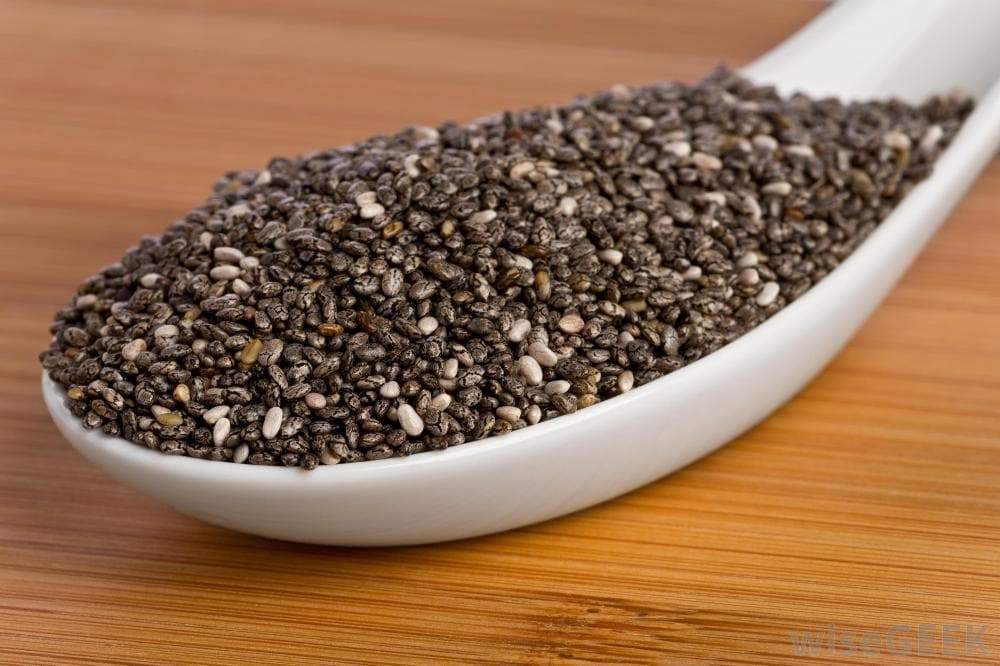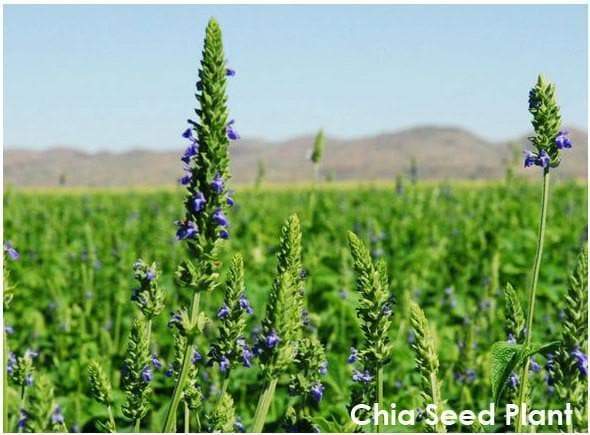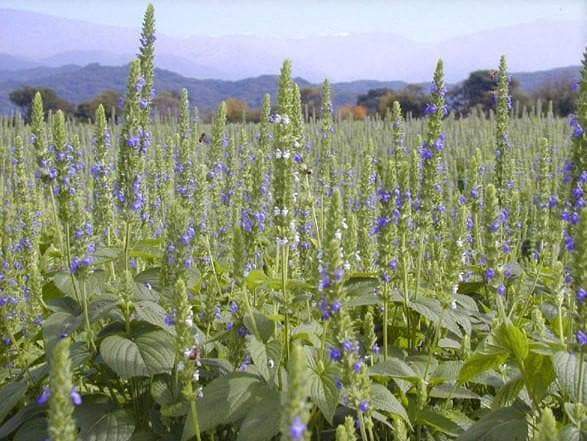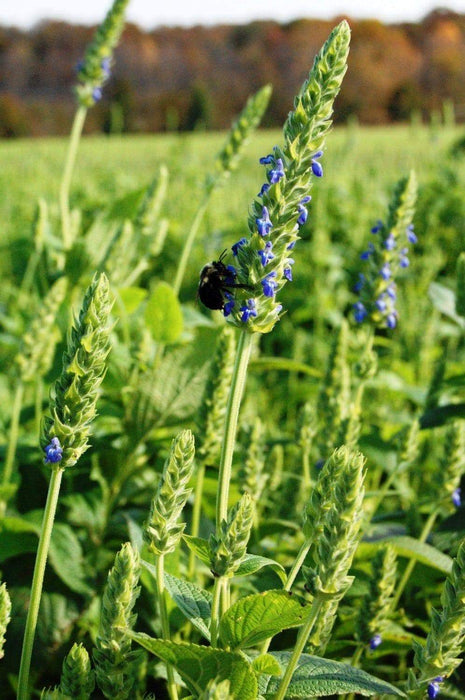
Chia Plant Seeds, An Ancient Superfood - BULK - (Salvia hispanica) Organic, Untreated Seeds,Grow Your Own Chia !
Original price
$ 44.55
-
Original price
$ 77.55
Original price
$ 44.55
$ 44.55
-
$ 77.55
Current price
$ 44.55
Most orders are processed by the next day
Select your desired size and/or color from the available options.
Chia Plant Seeds
A popular component of the health food game, Chia seeds are consumed raw, made into flour, soaked in juices and teas, and added to smoothies. An excellent source of protein and Omega 3s (and simply delightful when grown as a pet) thereâs not many who canât appreciate some aspect of this versatile seed!
Detailed Chia Info: Salvia hispanica. Annual. 10-20 days. Zone 9-11. 31,000 seeds per oz. 18-24" height. Produces pointed, textured green leaves with serrated edges, and purple flower spikes.
About Chia: Chia, which originally grew in Mexico and Central America, has been valued as a staple nutrient for hundreds of years; in Mexico, it once acted as currency. With available water, natives could survive on the nutrients of a small amount of chia seeds for an entire day or many days if necessary. Several universities have researched the health benefits of chia and found that a tablespoon of seed could sustain a person for 24 hours even under extreme exertion.
The seeds provide essential nutrients and have many medical benefits, as well as being an excellent source of fiber, protein, calcium, and digestive enzymes. Chia seeds also contain one of the highest known sources of Essential Fatty Acids, the highest source of energy in nutrition that regulate many life processes in the body. Not to be outdone, chia leaves contain powerful antioxidants that improve overall health as well as increasing energy. Fresh or dried, the leaves make a therapeutic tea that banishes lethargy and purifies the body.
Chia Germination:
For sprouting purposes, place the chia seeds in a tray and moisten them with water. Cover the tray and keep it at a temperature of 75-85 degrees F for about four days or until they reach 1/2", the usual size for eating. Start the seeds for planting outdoors 4-6 weeks before the last spring frost, sowing them on the surface of the soil and keeping the flat warm and lightly moist. Transplant the seedlings well after frost, spacing them 12-15" apart in well drained soil and full sun.
Growing Chia Seeds:
Chia prefers fairly dry soil, and should not be watered regularly unless drought conditions persist.
Harvesting Chia:
Harvest fresh leaves as soon as the plant reaches a height of 6". The leaves can also be dried for use in tea. If given a long and warm enough growing season, chia will produce seed heads that can be dried and threshed to remove the seed. However, since chia seeds easily absorb moisture, they are prone to mold and other diseases; for this reason, eating untested chia seed may pose a risk.
Saving Chia Seeds:
Keep in mind that chia originally grew in the tropics, and requires a long growing season to produce flowers and seed; in areas with a shorter growing season, the plant may not have time to produce seed. If seed heads do mature, pick them when they start to turn dry and spread them out away from direct sunlight to dry completely. Thresh them to remove the seed, and store the seed in a cool, dry place.
Materials: Jamaican,American,Caribbean,Grow,Garden,Annual,spinach,kale,chinese,Chinese Spinach,Red Garnet Amaranth,sprouting,salad Select your desired size and color from the available option
A popular component of the health food game, Chia seeds are consumed raw, made into flour, soaked in juices and teas, and added to smoothies. An excellent source of protein and Omega 3s (and simply delightful when grown as a pet) thereâs not many who canât appreciate some aspect of this versatile seed!
Detailed Chia Info: Salvia hispanica. Annual. 10-20 days. Zone 9-11. 31,000 seeds per oz. 18-24" height. Produces pointed, textured green leaves with serrated edges, and purple flower spikes.
About Chia: Chia, which originally grew in Mexico and Central America, has been valued as a staple nutrient for hundreds of years; in Mexico, it once acted as currency. With available water, natives could survive on the nutrients of a small amount of chia seeds for an entire day or many days if necessary. Several universities have researched the health benefits of chia and found that a tablespoon of seed could sustain a person for 24 hours even under extreme exertion.
The seeds provide essential nutrients and have many medical benefits, as well as being an excellent source of fiber, protein, calcium, and digestive enzymes. Chia seeds also contain one of the highest known sources of Essential Fatty Acids, the highest source of energy in nutrition that regulate many life processes in the body. Not to be outdone, chia leaves contain powerful antioxidants that improve overall health as well as increasing energy. Fresh or dried, the leaves make a therapeutic tea that banishes lethargy and purifies the body.
Chia Germination:
For sprouting purposes, place the chia seeds in a tray and moisten them with water. Cover the tray and keep it at a temperature of 75-85 degrees F for about four days or until they reach 1/2", the usual size for eating. Start the seeds for planting outdoors 4-6 weeks before the last spring frost, sowing them on the surface of the soil and keeping the flat warm and lightly moist. Transplant the seedlings well after frost, spacing them 12-15" apart in well drained soil and full sun.
Growing Chia Seeds:
Chia prefers fairly dry soil, and should not be watered regularly unless drought conditions persist.
Harvesting Chia:
Harvest fresh leaves as soon as the plant reaches a height of 6". The leaves can also be dried for use in tea. If given a long and warm enough growing season, chia will produce seed heads that can be dried and threshed to remove the seed. However, since chia seeds easily absorb moisture, they are prone to mold and other diseases; for this reason, eating untested chia seed may pose a risk.
Saving Chia Seeds:
Keep in mind that chia originally grew in the tropics, and requires a long growing season to produce flowers and seed; in areas with a shorter growing season, the plant may not have time to produce seed. If seed heads do mature, pick them when they start to turn dry and spread them out away from direct sunlight to dry completely. Thresh them to remove the seed, and store the seed in a cool, dry place.
Materials: Jamaican,American,Caribbean,Grow,Garden,Annual,spinach,kale,chinese,Chinese Spinach,Red Garnet Amaranth,sprouting,salad Select your desired size and color from the available option
LET OUR CUSTOMER SPEAK FOR US
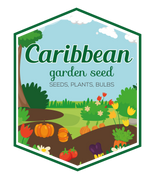
![[Seeds] - Caribbeangardenseed](http://caribbeangardenseed.com/cdn/shop/files/gift-card-gift-card-1_1024x1024_dfa857db-9150-4315-a362-7f0bb3fb9c47_60x28.png?v=1703978838)
